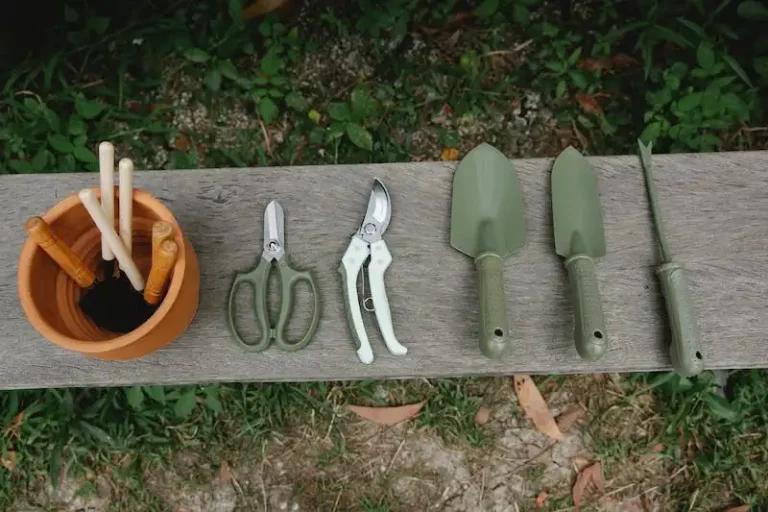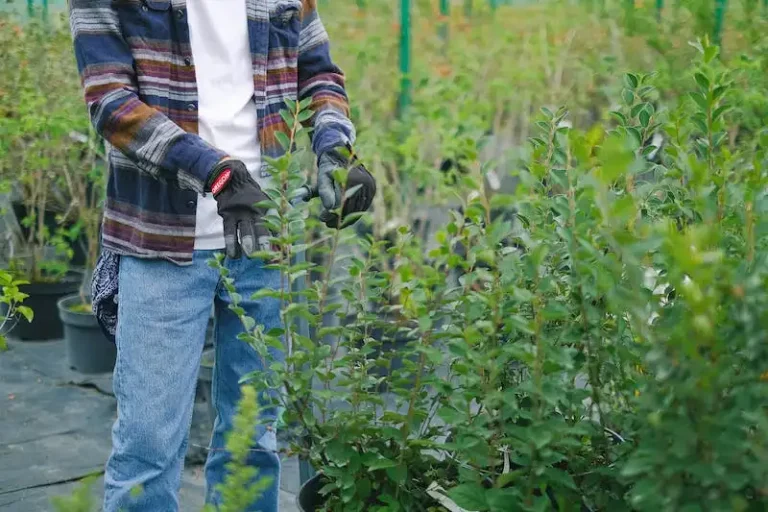If you’ve ever considered growing your own fruits and vegetables, celery is an excellent choice for beginners. This guide covers everything you need to know about how to grow celery from seed to harvest.
Celery is a cool-weather crop that grows best in temperatures between 55°F and 70°F. It can be grown in a container or directly in the ground, making it a versatile option for small gardens or for those who are limited on space.
Growing celery requires a bit of patience, as it takes about three to four months from seed to harvest. However, the reward is worth the wait: homegrown celery is more flavorful and tender than store-bought varieties.
One of the key things to keep in mind when growing celery is that it needs consistently cool temperatures. If the temperatures get too high, the celery may become stressed and bolt or develop bitter-tasting petioles. To control the temperatures, you can use shade cloth or plant celery in a cooler part of your garden.
Celery is also susceptible to nematodes, insects, and other pests, so it’s important to regularly inspect and treat your plants. Some common pests include aphids, which can be controlled with insecticidal soap, and celery leaf miner, which can be prevented with row covers.
Before you start planting celery, you’ll need a few essential tools and materials. These include high-quality seeds, well-draining soil, compost or manure, a container or garden bed, and optional materials like sand or black plastic to help with weed control and retain moisture.
Celery prefers rich, loamy soil that is high in organic matter. Before planting, work in compost or manure to improve the soil’s fertility. It’s also a good idea to add about an inch of sand to the soil to improve drainage.
When planting celery, make sure to space the seeds or seedlings uniformly in rows, about 8-10 inches apart. This will allow the plants to grow and develop properly. If you’re planting in a container, make sure it has sufficient drainage holes to avoid waterlogged soil.
Once your celery is planted, it’s important to provide consistent moisture. Celery craves water, and if it doesn’t get enough, it may become tough and stringy. Aim to water your celery plants at least once a week, making sure the soil is consistently moist but not waterlogged.
In addition to regular watering, celery needs a steady supply of nutrients. You can feed your plants with a balanced fertilizer every two weeks or use organic options like fish emulsion or worm castings.
If you’re growing celery for storage, it’s best to harvest it before the first frosts of the season. Simply cut the stalks off at ground level, and you’ll have fresh celery to use in your favorite dishes.
With this guide, you’ll have all the information you need to successfully grow celery from seed to harvest. Whether you’re a seasoned gardener or a beginner, growing your own celery is a rewarding and cost-effective way to enjoy fresh, healthy produce.
How to Grow Celery in Your Garden
Growing celery in your garden can be a rewarding and delicious experience. Celery, known for its crispy stalks and refreshing taste, is a versatile vegetable that can be used in a variety of dishes. If you’re ready to embark on the journey of growing your own celery, here are some tips to help you get started:
1. Preparation
Before you begin planting celery, it’s important to prepare your garden bed. Celery plants require a lot of moisture, so make sure the soil is well-drained and rich in organic matter. You can add compost or well-rotted manure to the soil to improve its fertility. It’s also recommended to apply lime or calcium to the soil to enhance the growth of celery plants.
2. Planting
Celery seeds are quite small and can be difficult to handle. To make planting easier, you can sprinkle the seeds on a wet paper towel and allow them to germinate for a few days. Once the seeds have sprouted, you can carefully transfer them to small pots or flats filled with potting mix. When the seedlings are about 2-3 inches tall, they can be transplanted into the garden. Space the plants about 6-8 inches apart in rows.
3. Care
Celery plants are relatively high-maintenance and require a cool and moist environment to thrive. Make sure to keep the soil consistently moist, but not waterlogged. Celery also craves for a consistent and even supply of nutrients, so you can side-dress the plants with compost or fertilizer every few weeks. In addition, celery is sensitive to temperature fluctuations, so it’s important to provide some shade to the plants during hot summer days.
4. Diseases and Insects
Celery plants are susceptible to several diseases and pests, including blanching diseases, nematodes, and insects like aphids and caterpillars. To control these problems, you can use organic insecticides or homemade pest control methods. It’s also helpful to regularly inspect your plants for signs of diseases or pests and take appropriate measures to prevent their spread.
5. Harvest
Celery takes about 3-4 months to reach maturity. You can start harvesting the outer stalks when they are about 8-12 inches tall, or wait for the entire plant to mature for a bigger harvest. To harvest celery, simply cut the stalks near the base of the plant. If you prefer a milder taste, you can blanch the celery by covering the plants with a sheet or black plastic for a few weeks before harvest.
By following these tips, you can grow your own celery and enjoy the taste of fresh and nutritious vegetables right from your own garden. Gardening can be a rewarding hobby that not only saves you money but also allows you to control the quality of the food you eat. So, grab your gardening equipment and get ready to dive into the world of celery cultivation!
Recommended Celery Varieties
When it comes to growing celery, there are several recommended varieties that work well for beginners. Here are some popular options to consider:
- Pascal: This variety is a favorite among gardeners due to its crisp stalks and delicious taste. Pascal celery is known for its productivity and is a great choice for those looking to grow celery for soups, stews, and other culinary uses.
- Golden Self-Blanching: If you’re looking for a celery variety that doesn’t require a lot of blanching work, Golden Self-Blanching is a great option. It has naturally self-blanching stalks that turn golden in color, making it aesthetically pleasing in the garden.
- Tendercrisp: Tendercrisp celery is a popular choice among gardeners because of its high resistance to diseases and pests. It produces crunchy, bright green stalks that are perfect for snacking or adding to salads.
- Utah Tall: Utah Tall celery is a cool-season variety that can withstand frosts and colder temperatures. It is highly productive and has a milder taste compared to other varieties, making it a favorite among those who prefer a more subtle flavor.
Regardless of the variety you choose, it’s important to ensure that your celery plants have the right conditions to thrive. They grow best in cool, moist soils with good drainage. Adding organic matter to the soil before planting can help improve its fertility and moisture retention.
While celery can be direct-seeded, many gardeners prefer to start their celery plants indoors in flats to get a head start on the growing season. This also helps ensure a higher germination rate and gives you more control over the growing environment.
Proper irrigation is crucial for celery plants, as they need consistent moisture to grow well. Mulching around the plants with organic materials helps retain moisture and regulate soil temperatures. Watering deeply and thoroughly, especially during hot and dry periods, is essential to prevent the plants from becoming stressed.
In terms of nutrition, celery plants benefit from regular feeding. Providing a balanced fertilizer rich in nitrogen, phosphorus, and potassium can help promote healthy growth and strong stalks. Additionally, adding calcium to the soil can help prevent tip burn, which is a common problem faced by celery growers.
When it comes to pests and diseases, celery can be prone to issues such as blight and weeds. Regularly inspecting your plants for any signs of disease or pests, such as water-soaked spots on the leaves or chewed petioles, will help you catch these problems early and take appropriate action.
Overall, growing celery requires some attention and care, but with the right tools, tips, and varieties, you can enjoy a bountiful harvest of this nutritious and versatile vegetable. Whether you’re a seasoned gardener or a beginner, this guide will help you navigate the ins and outs of growing celery from seed to harvest.
How to Grow Celery
Growing celery can be a rewarding experience, and with the right approach, you can enjoy fresh, flavorful stalks throughout the growing season. Here is a beginner’s guide on how to grow celery:
- Start by obtaining celery seeds or seedlings from a reputable source.
- Prepare the soil by adding compost or well-rotted manure to improve its fertility. Celery prefers loose, well-draining soil.
- Sow the seeds in flats or containers filled with seed-starting mix. Gently press the seeds into the surface of the soil and mist with water.
- Soak the seeds in warm water for 24 hours before planting to improve germination rates.
- Plant the seedlings about 10-12 inches apart, in rows that are spaced about 3 feet apart. Make sure the soil is evenly moist around the seedlings.
- Mound soil around the base of each plant to help support the growing stalks.
- Watch out for weeds, as they can compete with celery for resources. Keep the area around the plants weed-free.
- Water regularly, making sure the soil is consistently moist. Celery requires about 1-1.5 inches of water per week.
- Feed the plants with a balanced, slow-release fertilizer to provide essential nutrients like nitrogen, phosphorus, and potassium.
- Control pests and diseases by regularly inspecting the plants and taking appropriate measures. Common celery diseases include early blight and blackheart.
- Harvest celery when the stalks are about 8-12 inches tall and have a rich green color. Cut the stalks at the base, leaving the cluster of leaves intact.
- Store harvested celery in the refrigerator or in a cool, dark place. It can stay fresh for a couple of weeks.
By following this guide, you’ll soon be enjoying the crisp, fresh taste of homegrown celery. If you have any further questions about growing celery, ask a gardening expert or consult a reliable resource like Debra’s Guide to Growing Celery.




